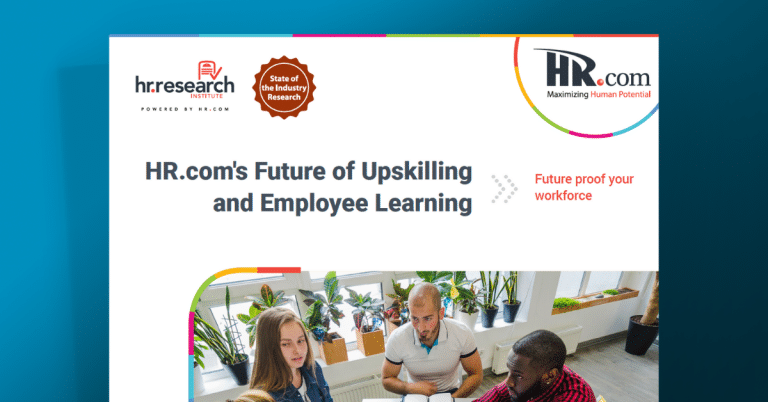
HR.com’s future of upskilling and employee learning
HR.com’s future of upskilling and employee learning
Upskilling is no longer optional — it’s the foundation for business resilience in a rapidly changing world. Yet, most organizations admit their current programs aren’t ready for the future.
This report, created by HR.com, explores the realities of today’s upskilling and reskilling efforts: what’s working, what’s falling short, and where organizations must focus to stay competitive in a fast-changing market.
In this report, you’ll find:
- How the quality of L&D impacts employee performance, engagement, and retention.
- The cultural and technological shifts needed to make upskilling continuous and personalized.
- Practical steps to prepare your workforce for AI-driven disruption and evolving skill demands.
Executive summary
In the world of upskilling and reskilling, 2025 brings both hope and heartache. The good news: HR pros know reskilling is urgent. The bad news: most think their current programs aren’t ready for the future.
To better understand the depth of this challenge, 88% of respondents in our research indicate that at least some employees in their organization are being upskilled or reskilled. The World Economic Forum covers the global labor market extensively and reports that over 1.1 billion jobs will be radically transformed over the next decade.
The sheer magnitude of reskilling will necessitate that HR and L&D teams reassess their approaches to workforce development. It will largely move out of the classroom, be delivered remotely, and be personalized to the needs of each learner. Yet, only 21% rate their L&D efforts as high quality (8 or above out of 10).
In this study, we will closely examine the state of reskilling and upskilling. We will discuss the drivers, barriers, and the impact of technology on the quality of our talent. Finally, we will provide insights to help your organization enhance its upskilling and learning initiatives.
Defining upskilling and reskilling
In the context of our survey and this report, we defined upskilling as follows:
Upskilling involves improving employees’ existing skills and abilities and acquiring new ones so these workers can advance in their professional roles and careers. An example might be teaching a classroom trainer how to incorporate AI into personalized learning experiences.
Reskilling, on the other hand, involves developing (or hiring) an employee for a new role or career. An example here might be ensuring one or more professionals in an IT department can lead teams through agile work processes. For purposes of this report, we will use the term “upskilling” to refer to both upskilling and reskilling.
Major research findings
- Upskilling is a high priority, but isn’t always high quality.
- The need to upskill is growing, while barriers remain widespread.
- Skill levels of the current workforce are mixed.
- A large percentage of organizations are not using L&D best practices.
- Corporate culture is aligned with the need for upskilling only on a few aspects.
- Few organizations are reskilling employees in response to AI.
- Upskilling produces significant outcomes.
- Compared to organizations that do not rate the quality of their L&D highly (L&D laggards), those that do (L&D leaders) are far more likely to measure upskilling impact, adopt microlearning, use diverse learning channels, align training with future talent needs, develop competency-based career paths, and provide clear learning paths for career growth.
The state of learning and upskilling today
Finding: Few respondents rate the overall quality of L&D in their organization highly
Only 21% of respondents give high marks to the quality of learning and development in their organizations (that is, eight or above on a 10-point scale). This finding is similar to HRRI’s 2024 upskilling report.
Of course, if the overall quality of learning is low, upskilling will suffer, and, ultimately, so will business.
You might also like...
Get the latest talent news in your inbox every month
By submitting this form, I consent to Eightfold processing my personal data in accordance with its Privacy Notice and agree to receive marketing emails from Eightfold about its products and events. I acknowledge that I can unsubscribe or update my preferences at any time.
